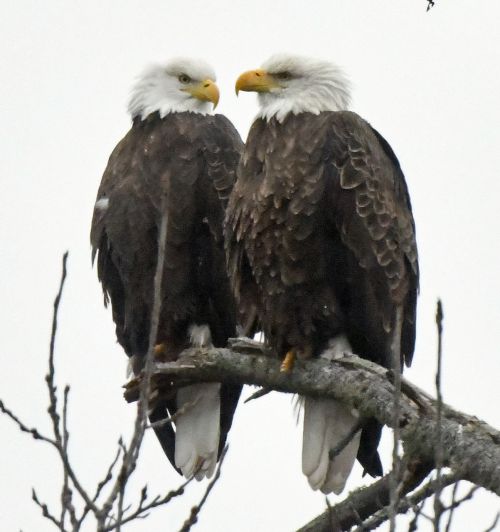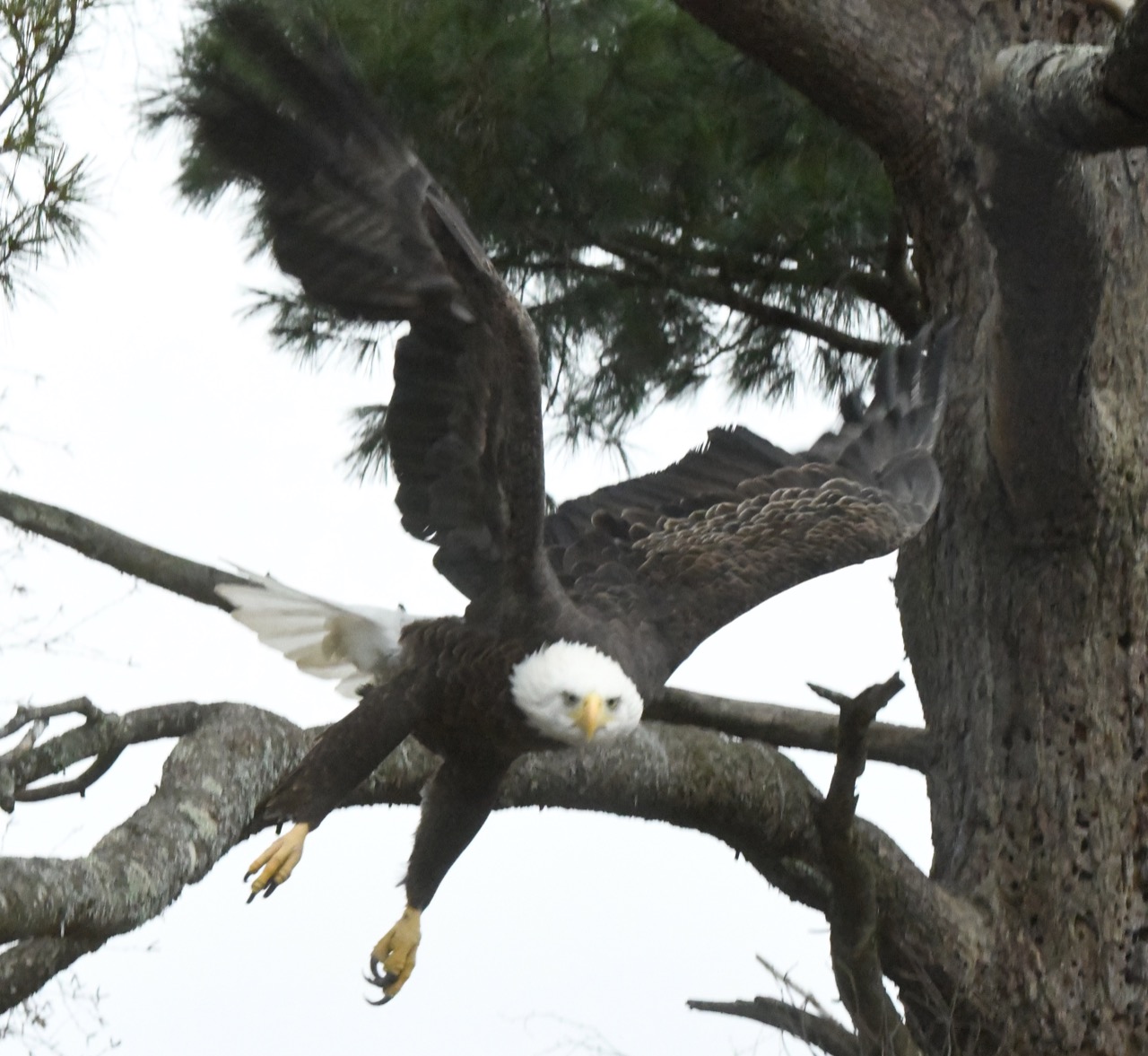Missing Bears but Eagles are Helping - UPDATE November 8, 2025
I miss my interactions with bears that show trust. It feels good to be with these bears that are likely to remain safe in years of berry crop failures when bears elsewhere are traveling far looking for food and being shot as supposedly dangerous nuisances seeking tidbits of garbage and bird seed in residential areas, while bears in this area are being welcomed with substantial food at a dozen diversionary feeding sites and staying out of trouble—with a good likelihood of living longer than usual.
But now with the bears tucked in for the winter, it’s bald eagles that are showing a bit of how they live. A loving couple that distract me from typing when they call to each other are spending a lot of time here. It is usually the female calling to her mate before flying to sit closely with him on their favorite perch. Sitting side by side makes it easy to tell the female from the male. Females are about 25% bigger weighing 10 to 15 pounds, while males weigh only 6-9 pounds. Females like the one beginning her flight to her mate have a wingspan of 7 to 8 feet compared to the male’s 6 to 7 feet. This male makes it easier than usual to know who he is because he has an odd white feather on the right side of his chest that is usually visible. Also, the line where his white feathers meet the top of his bill goes straight across. For the female, the line is a V that points toward her forehead.
Minnesota is reported to have 9,800 breeding pairs, which is by far the highest number in the lower 48 states.
Now that the lake out the window has frozen over during the night for the first time this winter and the beavers have completed their preparations for winter, I’m looking forward to the courses of 2026. We’re a little late in opening registration this year, but we’ll announce the opening as soon as we can.
Thank you for all you do,
Lynn Rogers, Biologist, Wildlife Research Institute and North American Bear Center




